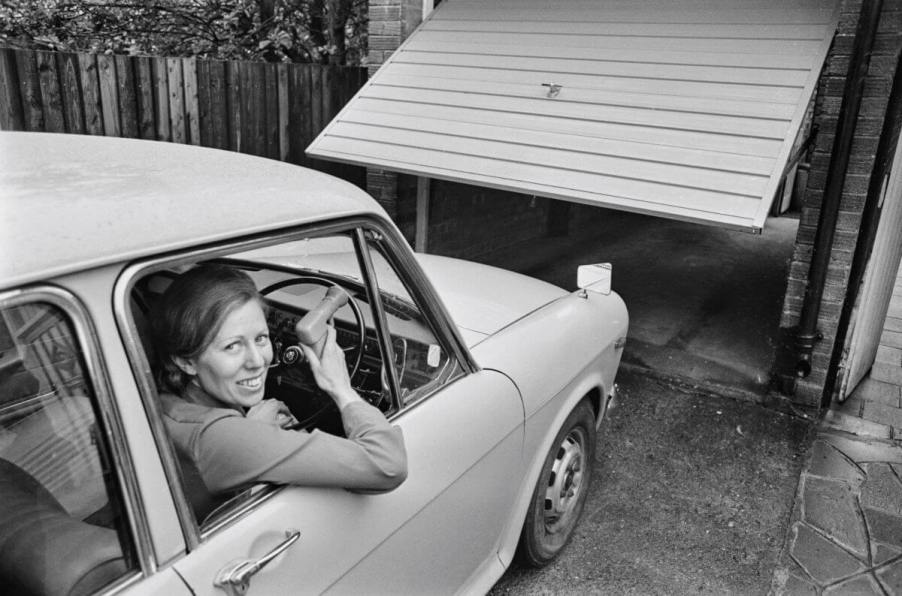
8 of the Most Common Garage Door Problems (And How to Solve Them)
When it comes to car safety, one of the most valuable accessories isn’t even part of your car. A garage protects your car from frost and snow-covered windows, allowing safer driving in cold climates. A garage and its door also secure your vehicle, providing safer entry and exit than outdoor parking spaces.
However, garage doors, with predictable operation typically taken for granted, sometimes malfunction. While a push of a button usually magically opens the garage door, what do you do when it fails? Here are eight of the most common garage door problems and what causes them.
1. The garage door won’t open or close
If the usual method of opening the door (remote garage door opener inside your car, wall-mounted door opener button, keypad, etc.) doesn’t work, there are some things you can check before calling a repair service.
First, if the door opens but won’t close, check that the door sensors are unobstructed. Door Pros recommends making sure you have power next. Unless you have a door opener with a battery backup, the absence of electricity will prevent the door from opening or closing. Finally, if only one opening method fails, check the fuse, power, or battery for that method.
If it’s not a power issue, it could be the door itself. To test the door, disengage the door drive or turn off its power and lift the door manually. It’ll be heavy, but it should operate smoothly and stay in place when raised midway. If it rises on its own, falls from midway, or operates unevenly, the springs or track rollers likely need replacing or adjusting. A word of caution for you DIY types: Garage door springs contain substantial preload that can release violently and cause physical harm and property damage.
If the door manually operates as it should and the opener has power, there is likely an issue with the garage door opener itself. Can you hear it hum when it should be operating the door? Does the chain or cable move but not the door? Is the light on the unit on if equipped with one? This information helps when diagnosing the problem.
2. The door opens or closes too slowly
If the garage door opens and closes but does so slower than expected, there are some things to check before calling for repairs. Forbes says dirty or dried-out tracks and rollers can lead to slow garage door operation. Annual maintenance should include cleaning rollers and tracks with a brush and applying a manufacturer’s recommended lubricant to the moving parts. Yearly maintenance is also an excellent time to check the condition of the rollers, track, and drive mechanism.
3. The door opens and closes unevenly
If your garage door opens or closes unevenly, and the tracks and rollers are cleaned and properly lubricated, it could be a bad limit switch. Limit switches prevent the drive motor from opening or closing too far. If one side fails, it could allow the door to move too far on that side, resulting in misalignment.
4. The garage door makes loud or odd noises
Your garage door opener should hum quietly, although there will be occasional clicking or metallic sliding noises from the tracks. Loud or odd noises indicate loose, rusted, broken, or misaligned parts. Olympic Garage Door recommends seeking professional repair under these circumstances, as the risk of injury is significant. Creative Door mostly agrees but says rattles caused by loose bolts and hardware are easily tightened with a wrench by most DIYers.
5. The keypad doesn’t work
Sometimes, other methods for opening and closing the garage door will work, but the external keypad will not. In this case, first, check the keypad’s batteries. If they’re good, follow the manufacturer’s directions to sync the keypad to the door opener and ensure you’re using the proper code, even if you must reprogram it. However, these devices often fail from exposure to the elements, so it may be time to replace the keypad.
6. The door motor runs without moving
If you can hear your garage door opener motor running, but the door isn’t moving, it could need adjusting, or the drive mechanism is detached. First, make sure the drive mechanism is engaged. Look for a rope or handle to disengage the door from the mechanism to allow manual operation in an emergency. While the mechanism should reengage automatically as the door opener cycles through, sometimes they do not work correctly. If it’s properly engaged, you’ll need to call for repair services unless you’re an upper-level DIY pro.
7. The garage door won’t close all the way
If your garage door closes partway and stays there, it could be out of adjustment, in a bind, or hitting an obstruction. A properly adjusted door closes snugly against the garage floor. If there are no obstructions or binding, it’s likely a bad sensor that needs replacing.
8. The garage door goes back up before closing
If your garage door closes partway before raising entirely, check for problems or obstructions in the track system. If the door hits an object or gets in a bind, the pressure sensor will raise the door automatically. The safety sensors near the garage floor also raise the door if something is in the area under the door.
So, when attempting a DIY garage door repair, it’s critical to make an honest assessment of your skills. Garage door mechanisms are dangerous, and admitting what you do not know could save you from serious injury. While it’s relatively safe to clean and lubricate rollers and tracks and tighten loose hardware, anything involving springs, cables, and drive mechanisms should be left to the professionals.




